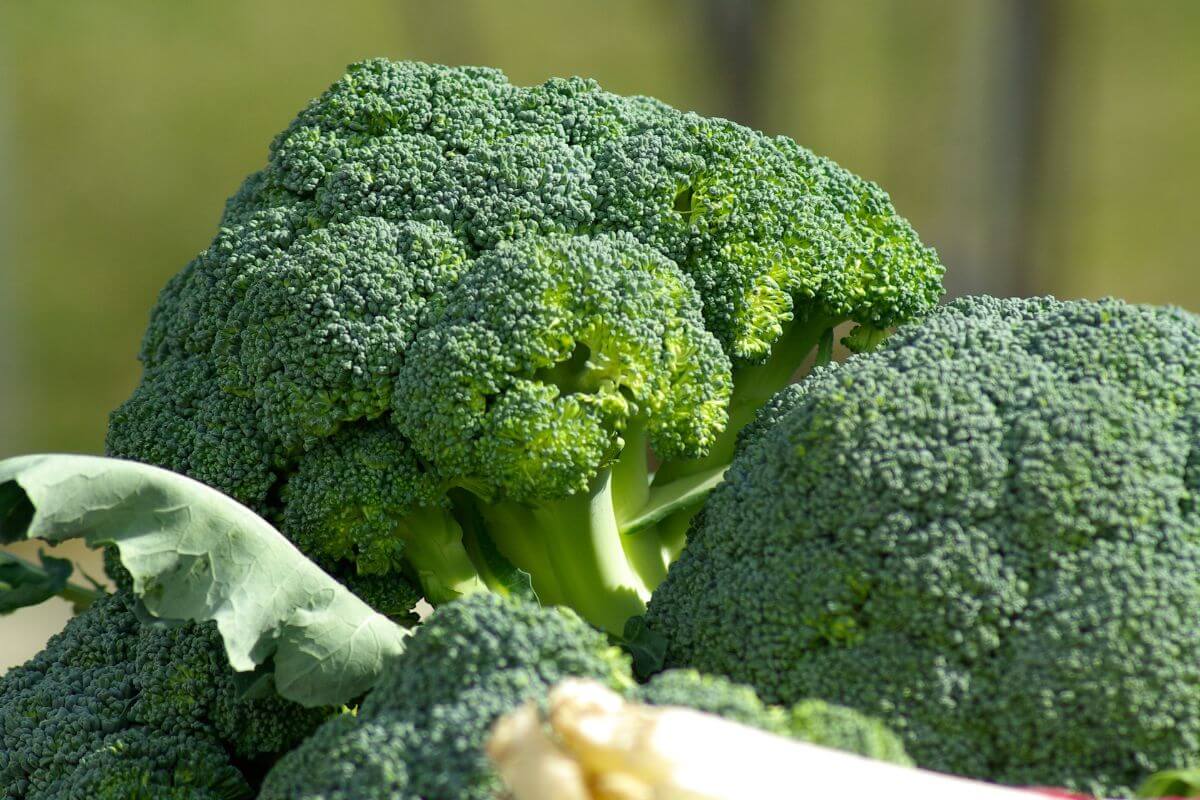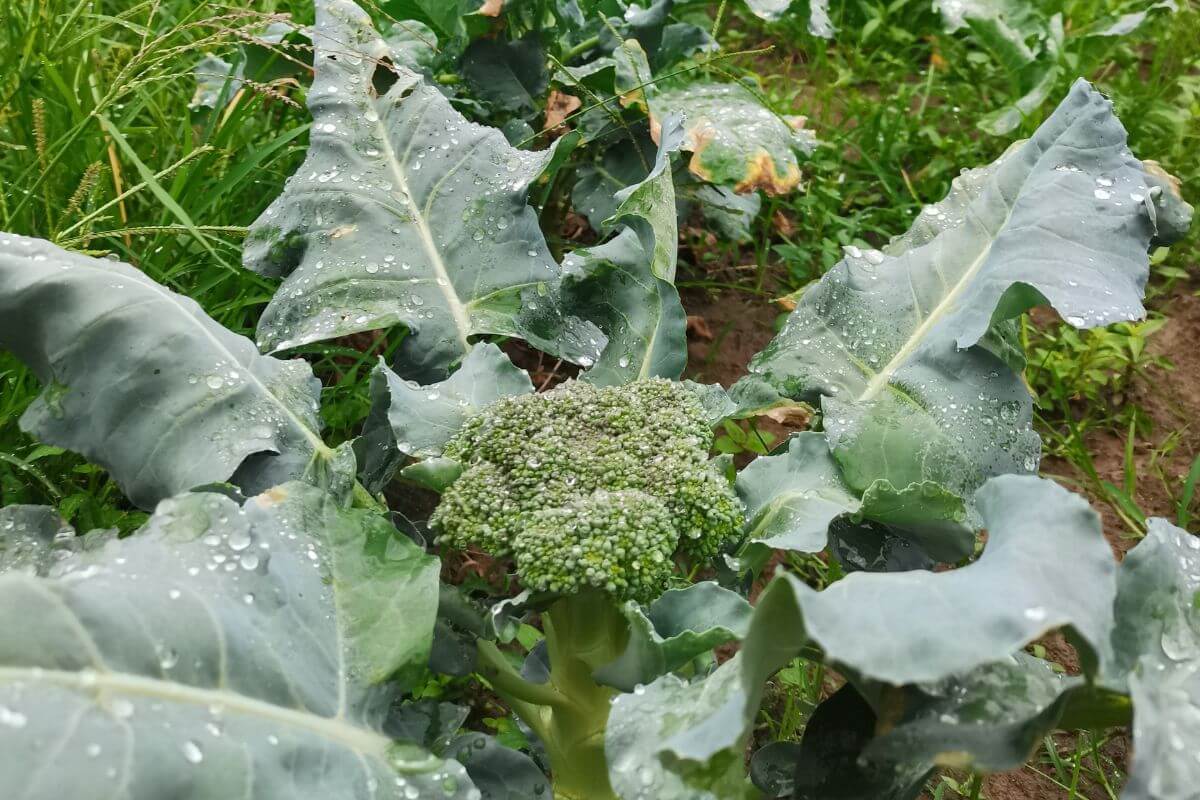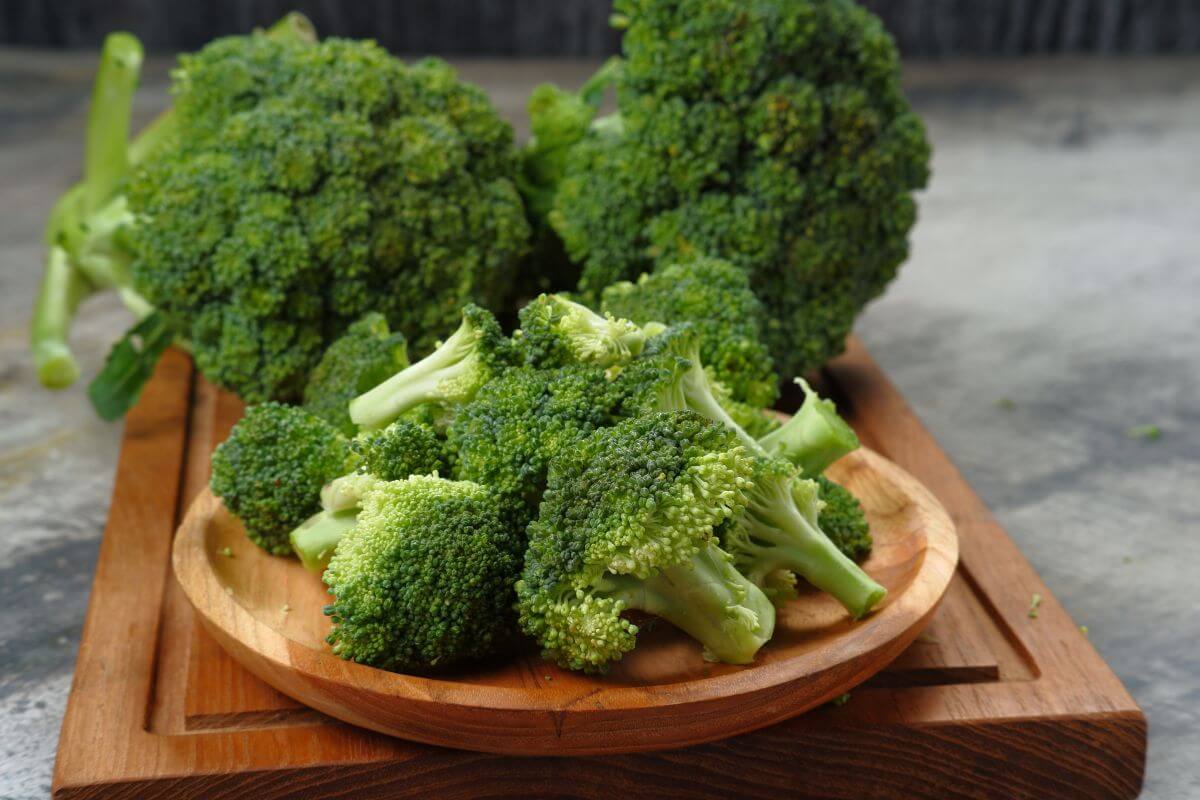Is broccoli man-made or is it natural and found in nature? When asked if broccoli is man-made, your first reaction may be wondering how broccoli can be man-made if it’s grown in the earth?
Yes, broccoli is man-made and did not appear naturally in the wild. Through a lengthy process of selective breeding and artificial selection, broccoli has been transformed from its wild cabbage ancestor into the popular vegetable it is today.
Starting centuries ago, the selective breeding process has created the tasty and nutritious characteristics that led broccoli to become one of the most popular man-made vegetables.
- Related Article: List of Man-Made Fruits and Vegetables
Let’s start by taking a look at the origins of broccoli.
Broccoli History

While broccoli may be relatively new to some, it has been consumed in some locations for more than 2,000 years.
Broccoli’s possible origins can be traced back to Southern Italy or the Mediterranean area where wild cabbage plants grew in abundance. They were appreciated by both the Etruscans and in the ancient Roman Empire.
Pliny the Elder, a famous naturalist who lived from 23 to 73 AD, actually wrote about how broccoli was grown, harvested, and eventually cooked.
Broccoli finally went international after 1533 when Henry II took Caterina de’ Medici as his bride and she introduced broccoli to the French court, where Italian chefs were in residence.
Today, broccoli is widely cultivated all over the world and is a staple in many diets. It is especially popular in America due to its many health benefits and how easy it is to find.
Whether consumed raw or cooked, It can easily be acquired as a fresh vegetable in season or as a frozen vegetable at the supermarket.
However, there is an obvious disadvantage to its current growth cycle. It takes an extensive amount of effort to cultivate and harvest it compared to other cruciferous vegetables like cauliflower or collard greens.
Broccoli Life Cycle and Growth

Broccoli is a member of the Brassicaceae or cabbage family, so it’s known as a biennial plant that needs two years for it to complete its life cycle and produce something edible.
During the first year of life, the plant will grow a root system, stalks, and foliage. In the winter of the first year, it will enter dormancy.
The winter cold will stimulate flowering and seed production. Cold can be produced artificially to speed up the natural cycle causing broccoli to behave like an annual plant, if preferred.
Then in the second year, it will grow taller and develop seeds to ensure the reproduction of the species.
Then the original plant will die. They do not regenerate in the following season.
What Is Selective Breeding?
Much like the breeding of animals, plants with desirable characteristics are bred to improve those characteristics. Plants can be bred to increase their size, their taste, or to be more productive.
This breeding process is often used for agricultural purposes to cultivate plants that are more disease or pest resistant, as well as more tolerant of harsh climatic conditions, such as drought.
The breeding process is not limited to the use of seeds, but often makes use of cuttings, layering, or grafting.
One noteworthy aspect of selective breeding is how long it takes to produce the desired results. It can often take decades and centuries to get the desired results through selective breeding.
You may need to go through multiple cycles of waiting for a generation to grow, replanting its seeds, and waiting for growth again before you see the desired result.
Selective breeding is also called artificial selection because it relies on humans to make changes. Humans decide which traits they want to breed into the next generation. This is why we call it man-made or human-made.
Selective Breeding of Broccoli
Broccoli has been bred over generations through the use of Brassica oleracea, also known as wild cabbage or wild mustard. This is a species that finds its natural habitat along the coasts of the Atlantic Ocean or the Mediterranean Sea in Europe.
A variety of vegetables originate from the Brassica oleracea, including Brussels sprouts, Cabbage, Cauliflower, Collard, and Kale, and of course, Broccoli.
All of these cultivars have been developed systematically to strengthen and reinforce specific desired features in separate plants.
Wild cabbage produces small buds every other year as a biennial plant. Through cultivation in a controlled environment, the entire process is sped up. When larger, tastier plants grew, they were saved and propagated while smaller, less tasty plants were tossed out.
This process is repeated harvest after harvest. By reinforcing desired genetic traits naturally, a new plant, broccoli was born.
Some people will ask – Is broccoli real? As you can see, broccoli is very real and it was made by generations of selectively breeding various plants to get to the ones that we see in grocery stores today.
Is Broccoli Healthy if it’s Man-Made?

Yes, broccoli is healthy and full of vitamins and nutrients, even if it’s man-made. Broccoli is low in calories, and contains fiber, protein, minerals, vitamins, and antioxidants. It also contains calcium, iron, selenium, potassium, and magnesium, as well as vitamins A, B, C, E, and K.
Remember that broccoli is not a genetically modified organism (GMO), so there are no concerns there because of the unknowns with GMO. There were no chemicals in how they were made.
Broccoli was not created in a laboratory but was cultivated through the selection of the very best plants at harvest time yearly. The plant has evolved through selective breeding and natural selection of the best every year.
Is Broccoli Man-Made Final Thoughts
Broccoli is a man-made vegetable that has been cultivated through selective breeding and natural selection of the best plants over many years.
Man intervened to get the best plant by continually cultivating the best of the harvest through decades of farming. It can only be considered man-made in the sense that if humans had not intervened with selective breeding in the Mediterranean region, today’s broccoli in its current form might never have existed.
Learn more about other fruits and vegetables that might be man-made:

